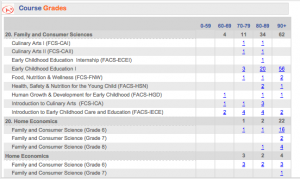For many, the virtual classroom is difficult to understand without first hand experience. It is true that a virtual classroom does not have walls, rows of desks or an end-of-class bell BUT it does have the most critical component of any successful classroom, an instructor who is present and engaged with students.
As Director of the Illinois Virtual School (IVS), I regularly visit with district and school administrators, as well as community members around the state. A typical question is, “How does the online course work?” or “How do students interact with the instructor in the virtual classroom?” I use this opportunity to share practices IVS has found to be essential for a successful online course experience. The instructor role is key. My comments usually focus on (1) instructor-student communication; (2) management and oversight of course instruction and content; and (3) instructional feedback provided on assignments and assessments. However, I realize I am providing a somewhat limited picture of the learning opportunities that are afforded to students taking online course(s). Teachers are the facilitators, the guides for students navigating online courses, gathering their artifacts, increasing their awareness and active use of 21st Century Skills.
What 21st century learning experience does the instructor of an online course provide students? The Partnership for 21st Century Skills (http://www.p21.org/our-work/p21-framework) identifies the student outcomes for the 21st century learner that we incorporate at IVS. The 4 Cs: Critical Thinking, Communication, Collaboration and Creativity have been promoted as “super skills” for the 21st century. Today’s online instructors continually find new and engaging ways to utilize the 4Cs in their virtual classrooms.
Critical Thinking:
Recalling the plot of a short story or listing important historical dates are no longer sufficient for today’s virtual or classroom assessment. IVS instructors utilize course discussion boards to promote analysis and reflection about a topic. In Oceanography, students are asked to explain how social media has an impact on their views of environmental issues. The use of online simulations, analysis of case studies and debate are also used in the online classroom to support higher order thinking. For example, students in Consumer Economics utilize web-base gaming simulations to test different outcomes while developing their financial literacy skills. In Psychology, students participate in an online science fair. In teams, the students design and conduct experiments that are then shared synchronously with classmates.
Communication:
Teacher-to–student and student-to–student communication is essential in an online course. Students are asked to complete an Orientation prior to starting their online course. The Orientation stresses the importance of ongoing communication with the instructor as well as tips for communicating effectively online. The first activity in any IVS course is to demonstrate communication with the instructor. Students must email the teachers, share information about themselves and pose questions. Instructors use this activity to ensure students know how to contact them to ask questions but also to begin building the immensely important community of the online classroom where all learners are engaged and supported. Students are not given the opportunity to “sit in the back of the class” and not interact because in online learning, communication is vital to student success. IVS teachers are trained in various techniques and strategies for maintaining student engagement in the learning process. Quarterly professional development held virtually and our annual summer face-to-face conference are opportunities for our virtual teachers to collaborate and enhance their skills. Communication with parents and other IVS stakeholders is also an ongoing goal.
Collaboration:
Online students have many opportunities to collaborate on assignments and projects. In the IVS AP Biology course, students complete experiments and then share their data with peers to increase the number of iterations they have to draw from and improve the statistical analysis of their results. In the Creative Writing course, students complete a collaborative experiment in which they attempt to write about a single event from eight identified points of view. Classmates then critique the writing samples generated. The IVS German students meet regularly with their virtual instructor via a web conferencing tool to practice their German speaking and listening skills. These types of activities help to strengthen the community each teacher is working to facilitate.
Creativity:
Online instructors promote creativity in much the same way as classroom teachers do, by offering their students different options when it comes to assignments and projects and brining fresh ideas to the online environment. IVS courses provide numerous multi-media options when demonstrating knowledge. In Environmental Science, students are asked to create a video or narrate while walking around their local surroundings. The project is then shared with classmates to examine local environment. Our Consumer Economics teachers work with students to help them learn and use creative presentation tools including Glogster, Smore, Emaze and Prezi to create fun interactive presentations for class projects. The engaged learner is the successful learner.
So, while highly valued for their subject areas and technical skills, our virtual instructors also need to be valued for the fostering of our students as they gather skills and tools needed for success in this new age of learning. It is certainly a daunting task, and we will again, as we have done in the past, rely on our teachers to lead our students forward in life towards college and career. I have since revised my answer to the simple ‘How does the online course work’ question, knowing that the answer is much more profound.

